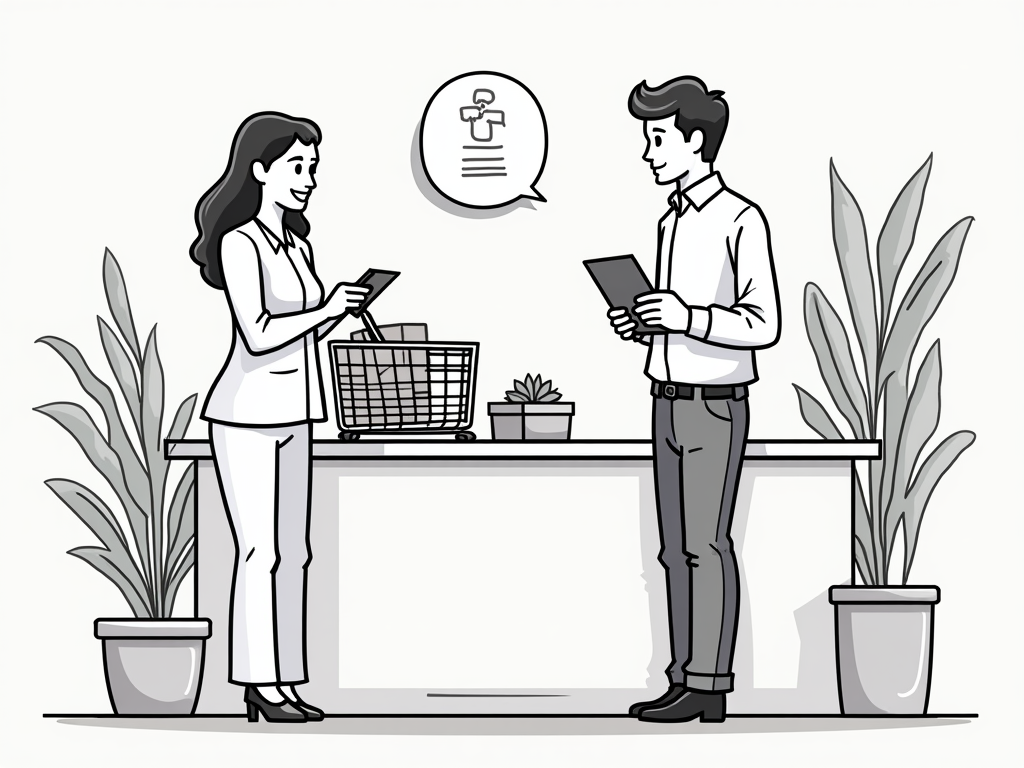
Intrastat and VAT Reporting for Estonian Companies Trading in the EU: A Comprehensive Guide
Reading time: 12 minutes
Table of Contents
- Introduction: Navigating EU Trade Compliance
- Intrastat Reporting Essentials for Estonian Businesses
- VAT Obligations for EU Trade
- Common Compliance Challenges and Solutions
- Digital Tools and Resources for Simplifying Compliance
- Strategic Compliance Timeline
- Real-World Case Studies
- Conclusion
- Frequently Asked Questions
Introduction: Navigating EU Trade Compliance
Feeling overwhelmed by the complexities of EU trade reporting requirements? You’re not alone. For Estonian companies engaged in cross-border trade within the European Union, compliance with Intrastat and VAT reporting obligations can feel like navigating a labyrinth of technical requirements and deadlines.
The stakes are high: improper reporting can lead to penalties, delayed shipments, and strained relationships with tax authorities. Yet mastering these systems isn’t just about avoiding problems—it’s about creating a streamlined, efficient operational foundation that can give your business a competitive edge.
In this guide, we’ll break down the essential components of Intrastat and VAT reporting for Estonian businesses, transforming what often feels like bureaucratic burden into a strategic opportunity. Let’s cut through the complexity and focus on what truly matters for your business operations.
Intrastat Reporting Essentials for Estonian Businesses
Intrastat is the system for collecting information and producing statistics on the trade of goods between EU member states. For Estonian companies, understanding when and how to file these reports is fundamental to EU trade compliance.
Threshold Requirements: When Must You Report?
Not every business needs to file Intrastat declarations. The obligation depends on your annual trade volume, and Estonia sets specific thresholds that determine your reporting obligations.
For 2023, the key thresholds are:
- Arrivals (imports from EU countries): €230,000 annually
- Dispatches (exports to EU countries): €130,000 annually
Once your business exceeds either threshold, you’re required to submit monthly Intrastat declarations for the corresponding flow of goods (arrivals, dispatches, or both). Here’s the catch many businesses miss: once you trigger the reporting obligation, you must continue filing monthly declarations for the remainder of the calendar year and the following year, even if your trade volume drops below the threshold.
Essential Data Elements for Accurate Reporting
Intrastat declarations require specific data points that must be accurately reported. Common errors often stem from misclassification or misunderstanding of what’s required. Here’s what you need to include:
- Commodity code: The 8-digit CN (Combined Nomenclature) code identifying your product
- Country of dispatch/destination: The EU member state involved in the transaction
- Value: The taxable amount in euros, excluding VAT
- Net mass: The weight of goods in kilograms, excluding packaging
- Supplementary units: Required for certain commodity codes (pieces, pairs, liters, etc.)
- Nature of transaction: A code indicating the type of transaction (e.g., sale, return, processing)
- Delivery terms: Incoterms that specify the responsibilities of buyer and seller
- Mode of transport: The primary transportation method used
Pro Tip: The commodity code is arguably the most critical element, as it affects various compliance aspects beyond Intrastat. Invest in proper product classification systems or expertise to ensure accuracy.
VAT Obligations for EU Trade
While Intrastat focuses on statistical information, VAT reporting addresses the tax implications of your EU trade. For Estonian businesses, this introduces several distinct obligations.
Understanding EC Sales Lists and Recapitulative Statements
Beyond your regular Estonian VAT returns, EU trade triggers additional reporting requirements:
- EC Sales List (ESL): Required when you sell goods or provide services to VAT-registered businesses in other EU member states. These must be submitted monthly or quarterly, depending on your trading volume.
- VAT Information Exchange System (VIES): The platform through which your ESL data is shared among EU tax authorities to verify cross-border transactions.
The ESL serves as a critical cross-check mechanism for tax authorities. When you report a zero-rated sale to an EU business customer, the corresponding tax authority expects to see that customer declare and pay VAT on the acquisition. This system helps prevent VAT fraud and ensures proper tax collection across the EU.
One-Stop Shop (OSS) and Import One-Stop Shop (IOSS)
Since July 2021, the EU has introduced significant VAT e-commerce reforms that Estonian businesses should leverage:
- Union OSS: Allows businesses to report and pay VAT on B2C services and distance sales of goods to customers in other EU member states through a single return in Estonia.
- Import OSS: Simplifies VAT obligations for distance sales of imported goods with a value up to €150, enabling businesses to collect VAT at the point of sale rather than upon importation.
Using these schemes is optional but can dramatically simplify compliance by eliminating the need for multiple VAT registrations across different EU member states. For an Estonian e-commerce business selling to consumers throughout the EU, these schemes can reduce administrative burdens by up to 95%.
Common Compliance Challenges and Solutions
Let’s address the real-world obstacles Estonian businesses frequently encounter when managing their EU trade compliance obligations.
Challenge 1: Commodity Classification Errors
Incorrect commodity codes represent the most common and costly mistake in Intrastat reporting. Consider this scenario: an Estonian furniture manufacturer incorrectly classified wooden chair components as finished chairs, using code 9401.61 instead of 9403.90. This seemingly minor error led to:
- Inconsistencies between customs documentation and Intrastat reports
- Incorrect application of origin rules
- €3,200 in penalties from tax authorities
Solution: Implement a systematic classification process that includes:
- Regular staff training on CN code determination
- Integration of classification tools with your inventory management system
- Periodic review of high-volume or high-value product classifications
- Consider obtaining Binding Tariff Information (BTI) decisions for certainty on complex products
Challenge 2: Reconciliation Between Systems
Many businesses struggle to reconcile data between their ERP systems, VAT returns, and Intrastat declarations. Discrepancies often trigger tax authority inquiries and audits.
Solution: Create a monthly reconciliation process that compares:
- Total EU sales/purchases on VAT returns
- Total values reported on Intrastat declarations
- Total transactions in your accounting system
Where differences exist, document valid explanations (such as services not reported on Intrastat, or below-threshold transactions) to quickly address any tax authority questions.
Digital Tools and Resources for Simplifying Compliance
Estonian businesses benefit from some of the most advanced digital infrastructure in Europe. Leveraging these tools can transform compliance from a burden into a largely automated process.
Essential Systems for Estonian Businesses
- Estonian Tax and Customs Board e-services (e-MTA): The primary platform for submitting declarations, with specific modules for Intrastat and VAT reporting.
- Integration middleware: Solutions like Pipedrive and Flowdock that connect your ERP system with e-MTA for automated data transfer.
- Classification tools: Access the EU’s official TARIC database through the Estonian Tax and Customs Board portal for authoritative product classification.
As Jaan Kruusma, Head of Digital Services at the Estonian Tax and Customs Board, notes: “Our goal is to make compliance as frictionless as possible. Most Intrastat and VAT reporting can be largely automated when businesses properly integrate their systems with our digital services.“
Comparative Analysis of Compliance Management Approaches
| Approach | Time Investment (Monthly) | Error Rate | Cost Implications | Best For |
|---|---|---|---|---|
| Manual spreadsheet-based reporting | 15-20 hours | 5-15% | Low initial cost, high labor cost | Businesses with very low EU transaction volume |
| Semi-automated with basic ERP integration | 5-8 hours | 2-5% | Moderate setup cost, medium labor cost | SMEs with regular but limited EU trade |
| Fully automated with dedicated compliance software | 1-3 hours | <1% | High setup cost, minimal ongoing labor cost | Companies with high volume EU transactions |
| Outsourced to compliance specialists | 2-4 hours internal coordination | <1% | Highest direct cost, minimal internal resources | Complex operations or limited internal expertise |
Strategic Compliance Timeline
Effective management of Intrastat and VAT obligations requires a structured, calendar-based approach. Here’s a strategic timeline that Estonian businesses can adopt:
Monthly Compliance Sequence
- Days 1-7 after month-end: Extract and validate transaction data from your ERP system
- Days 8-10: Prepare and reconcile Intrastat declarations
- By the 14th of the month: Submit Intrastat declarations through e-MTA
- By the 20th of the month: Submit EC Sales Lists for the previous month
- By the 20th of the month: File and pay monthly VAT returns (if applicable)
For businesses using the quarterly submission option for ESLs and VAT returns, the deadlines fall on the same days but apply to the entire preceding quarter.
Well-structured Estonian companies build controls around these deadlines, with automated reminders and designated backup personnel for each task to ensure continuity during staff absences or busy periods.
Real-World Case Studies
Case Study 1: Digital Transformation at EstTech Solutions
EstTech Solutions, a mid-sized electronics components manufacturer in Tartu, was spending approximately 25 hours per month on manual Intrastat and VAT reporting. With EU trade representing 78% of their business, compliance accuracy was critical but consuming significant resources.
Their transformation approach:
- Upgraded their ERP system to automatically assign and verify CN codes
- Implemented direct API integration with e-MTA for automated submissions
- Created a dashboard monitoring EU trade volumes against Intrastat thresholds
- Established automated reconciliation between VAT returns and Intrastat data
The results were remarkable:
- Compliance time reduced by 85% to just 4 hours monthly
- Error rates dropped from 7% to under 0.5%
- Tax authority inquiries eliminated entirely for two consecutive years
- Cost savings of approximately €14,000 annually in staff time
Case Study 2: Threshold Management Strategy at Baltic Furnishings
Baltic Furnishings, a small Estonian furniture retailer, faced a common challenge: their EU purchases fluctuated around the Intrastat threshold, creating uncertainty about their reporting obligations. In some months they exceeded the threshold, while in others they fell below it.
Their strategic approach:
- Implemented monthly threshold monitoring with 90% alerts
- Restructured certain large EU purchases to optimize delivery scheduling
- Pre-built Intrastat reporting templates for quick activation when needed
- Trained multiple team members on compliance procedures for consistent readiness
This proactive threshold management strategy allowed them to:
- Maintain full compliance while reducing reporting periods by 40%
- Improve inventory management by strategically timing larger purchases
- Reduce compliance costs while maintaining supplier relationships
Conclusion
For Estonian businesses engaging in EU trade, Intrastat and VAT reporting shouldn’t be viewed merely as bureaucratic obligations but as integral components of a well-structured international trade strategy. The businesses that thrive in cross-border commerce are those that transform compliance requirements into operational advantages.
By implementing the strategies outlined in this guide—from proper classification systems to automated reporting tools, threshold management to reconciliation processes—you can significantly reduce both the time burden and error risk associated with EU trade compliance.
Remember that Estonia’s digital infrastructure provides unique advantages in this area. Few countries offer such seamless electronic integration between business systems and tax authorities. Leveraging these digital capabilities can give Estonian companies a distinct competitive edge in EU markets.
The most successful approach combines technological solutions with human expertise—automated systems for routine reporting alongside knowledgeable staff who can address exceptions and complexities. With this balanced strategy, your business can navigate EU trade compliance with confidence and efficiency.
Frequently Asked Questions
How do I determine if my business has crossed the Intrastat reporting threshold?
You must monitor the cumulative value of your EU arrivals (imports) and dispatches (exports) separately from the beginning of each calendar year. The current thresholds are €230,000 for arrivals and €130,000 for dispatches. The Estonian Tax and Customs Board will typically notify you when you’ve exceeded a threshold, but the legal obligation begins immediately upon crossing it—regardless of notification. That’s why proactive monitoring is essential. Create a monthly review process that calculates your year-to-date EU trade volumes and alerts you when you approach 80-90% of either threshold to ensure timely compliance preparation.
What are the penalties for late or incorrect Intrastat submissions in Estonia?
The Estonian Tax and Customs Board can impose penalties of up to €3,200 for non-compliance with Intrastat obligations. Typically, first infractions result in warnings rather than immediate penalties, especially for businesses demonstrating good-faith efforts to comply. However, repeated or intentional non-compliance can trigger maximum penalties. The board generally follows a progressive approach: first a reminder, then a formal warning, followed by financial penalties that increase with each violation. The best protection is to implement reliable systems for timely and accurate submissions, combined with prompt communication with authorities if you encounter legitimate difficulties meeting a deadline.
Can I claim input VAT on purchases from other EU countries without filing Intrastat?
Yes, Intrastat reporting and VAT recovery are separate systems, though they relate to the same transactions. You can reclaim input VAT on business purchases from other EU countries through your standard Estonian VAT return even if you haven’t reached the Intrastat threshold. The key requirement for VAT recovery is proper documentation—specifically, a valid VAT invoice from your EU supplier showing their VAT identification number. However, be aware that if your EU purchases exceed the Intrastat threshold (currently €230,000 annually), you must comply with Intrastat reporting requirements regardless of your VAT recovery activities. The tax authority’s systems will eventually flag the discrepancy between significant VAT recovery on EU purchases and missing Intrastat declarations.






